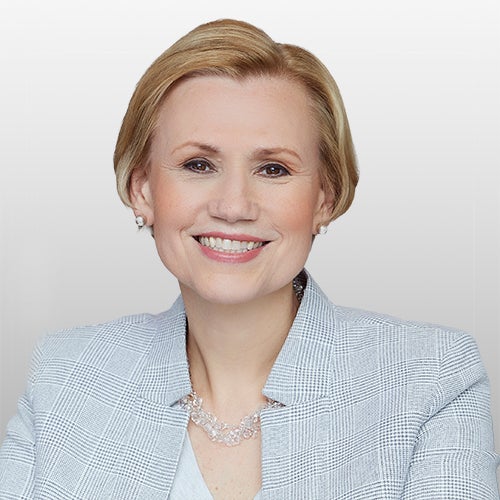By Kristina Hooper
I’ve said many times that there will be surprises, both positive and negative, on the journey to lower interest rates and economic re-acceleration globally. And last week’s news brought us a bit of both. On the bright side, US industrial production rose more than expected, and UK stocks showed strength in the face of some sticky inflation. However, new projections showed that the US deficit is expected to increase sharply, and rising crude oil prices could have an impact on goods inflation.
Mixed data on the US economy raises questions about the Federal Reserve.
The US continues to get mixed economic data. US retail sales in May were far weaker than expected, especially ex-autos,1 and housing starts fell to a four-year low.2 However, industrial production rose 0.9% in May, which was better than expected,3 and flash US Purchasing Managers’ Index (PMI) readings for June were better than expected. Composite PMI was at a 26-month high, and S&P noted an improvement in business confidence, especially in the services sector.4
This mixed data comes on top of previous signs that the US is experiencing a “two-speed” economy, with lower income households under significant pressure. And so we’re watching a delicate balancing act: The Federal Reserve (Fed) wants the US economy to slow enough to warrant rate cuts – but not slow so much that it goes into recession. With that goal in mind, weak retail sales data was bad news for the economy but good news for markets; strong PMIs were the opposite. We will want to follow the evolving data closely to see if the economy is running too hot for the Fed to be comfortable cutting in the third quarter.
UK stocks show strength as the July 4 election looms
Last week UK stocks were standout performers, with the MSCI UK Index gaining 1%.5 That happened even though the inflation print early in the week showed services inflation to be stickier than expected. And it happened even though the Bank of England decided to sit on its hands and not cut rates at its June meeting.
So what was behind the performance of UK equities? There are a variety of drivers. Idiosyncratic stories about private equity deals helped lift financials last week. In addition, consumer confidence has improved. But it seems the key driver is that UK stocks are reacting to the political certainty leading up to elections on July 4.
Polls are showing a strong preference for Labour. Some might think that would cause a negative reaction by markets, but that hasn’t happened. Why not? I think markets are ready for a leadership change after many years under the Tories. There is the potential for improved trade relations with the European Union under a new government. Also, it’s no longer Jeremy Corbyn’s Labour party; this party is now led by Keir Starmer, who seems to be more of a pragmatic centrist. Nostalgic voters who are hoping for a return to the Tony Blair years might be disappointed since the UK faces some very significant challenges. However, I believe UK risk assets should benefit from gradual rate cuts, which I think will start in August.
More signs of central bank divergence emerged during June’s meetings
It was not only the Bank of England that decided to sit on its hands last week. The Reserve Bank of Australia (RBA) also decided to keep rates at current levels. The RBA said they think it will take some time before inflation gets sustainably within the target range, so this central bank might be the laggard among major Western developed central banks.
At the forefront has been the Swiss National Bank (SNB), which led the pack by cutting in March. Last week it decided to cut rates again. The SNB cited several reasons for the cut — a decline in inflationary pressures (inflation in Switzerland was down to 1.4% in May6), a strong Swiss franc, and an increase in global uncertainty.
As I said last week, it’s clear central banks are reacting to their specific economic conditions in the timing of their rate cuts. Western central banks are all moving in the same direction, but I anticipate the next few months will likely be a time of significant divergence.
US spending drives a spike in federal deficit projections
Last week, the US Congressional Budget Office (CBO) released new projections showing that the federal deficit is expected to be $1.9 trillion, or 6.7% of gross domestic product, in the current 2024 fiscal year that ends this September.7 What’s surprising is that projection is more than $400 billion higher than the last projection we got from the CBO back in February. For context, the deficit shrank to 5.4% of GDP in 2022, but has widened over the last two years, even as the real economy has been solid and the unemployment rate has been low. 8
I see this as a cause for concern because the US is no longer in a crisis and should not need to be doing this level of deficit spending. Servicing the debt is the biggest issue for me. Net interest expense in fiscal year 2024 is expected to be $892 billion, eclipsing defense spending of $849 billion.9 Obviously the higher the rates, the bigger the expense on that debt. I’m hoping the Fed begins to cut rates soon to give a little breathing room to the federal budget. As some historians have pointed out, when a great nation’s spending to service its debt exceeds the amount it spends on defense, it usually doesn’t stay great for long.
In recent years, we’ve seen gold evolve as the “safe haven” asset class of choice – likely because of concerns over US fiscal sustainability – and I suspect this trend will continue. I would anticipate more pronounced “bond vigilantism” in the face of these projections, with investors selling bonds (or threatening to sell them) as a protest of sorts against this level of spending.
It’s worth noting that the Committee for a Responsible Federal Budget will be tracking the presidential candidates’ campaign pledges to assess how they will impact the federal deficit. This could be a fool’s errand given the many random campaign promises that may be made in the spur of the moment, but trying to do so is a noble cause when fiscal sustainability is a significant question.
Eurozone inflation not too concerning
The flash reading of euro area inflation showed it rose 2.6% year-over-year in May, up from 2.4% in April.10 This wasn’t just headline inflation; core inflation was 2.9% year-over-year in May, up from. 2.7% April.10 Services inflation experienced a surprisingly significant increase.
But it seems there is at least one driver that is temporary: One particular headline-grabbing concert tour has contributed to services inflation in places such as Spain and Portugal, which saw package trips and accommodation services inflation rise very significantly.11 By the way, this would not be the first time economists have posited that this tour has had an economic impact; you may recall that it was attributed with helping to boost the US economy last summer.
Crude oil prices have been on the rise
West Texas Intermediate crude oil briefly rose to $81 per barrel last week before settling slightly lower.12 The recent flare-up in tensions in the Middle East – especially Houthi attacks on ships in the Red Sea – has likely been a driver, as have been falling inventories. I don’t expect any dramatic increase in oil prices but we certainly want to watch this closely.
Looking ahead
There’s a lot of “Fedspeak” on the docket for this week, but it will be fairly irrelevant in comparison to the single most important gauge of inflation for the Fed – the US Personal Consumption Expenditures (PCE) Price Index, which comes out on Friday. Core PCE is expected to be down to about 2.6% year-over-year, which I believe will help the Fed feel confident about starting to cut rates by the end of the third quarter. Similarly, we will be waiting on inflation data in Canada – this will help dictate if the Bank of Canada cuts rates again in July. I expect it will.
We will also be focused on the Chinese economy. Last week we got China retail sales results that were better than expected, indicating a more resilient consumer. At the end of the week, we will get China PMIs, which hopefully will provide more positive data on the state of the Chinese economy.
I expect there will be surprises, both positive and negative, on this journey to lower rates and economic re-acceleration globally. But I anticipate this journey will present multiple opportunities for investors, especially in undervalued, underappreciated areas of markets. Revisit our midyear investment outlook to read more about those anticipated opportunities.






